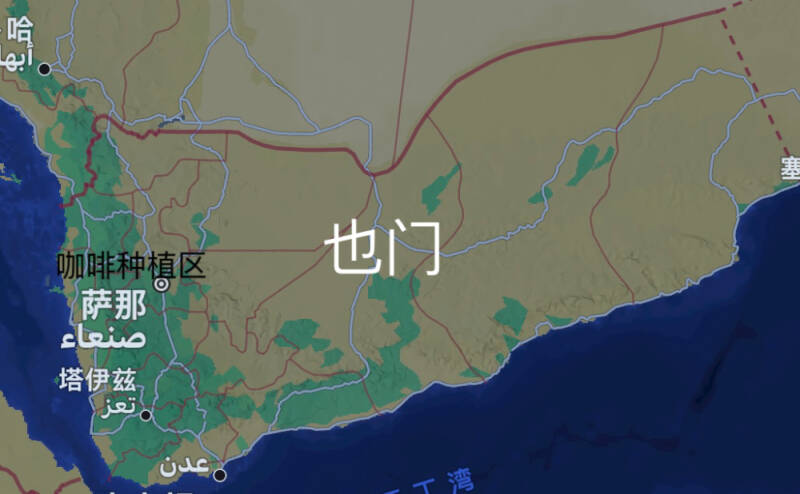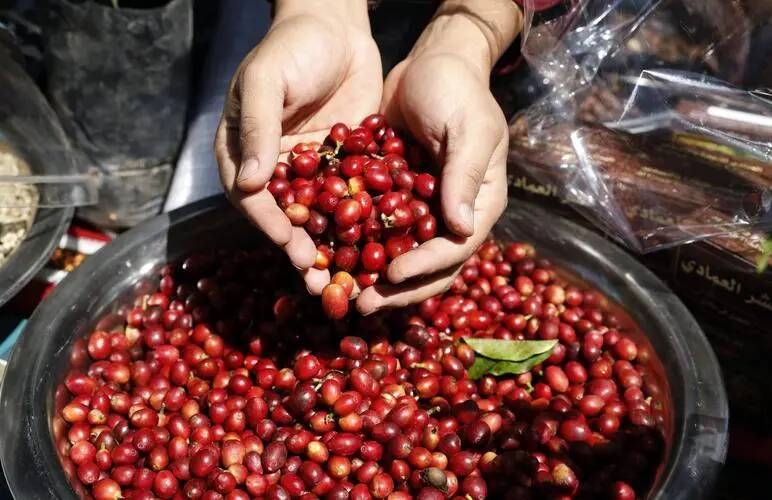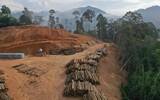Introduction of coffee development, coffee producing areas and coffee varieties in Yemen in Asian countries
Yemen is located in the southwestern tip of the Arabian Peninsula, neighboring Saudi Arabia and the Sultanate of Oman, facing Ethiopia and Somalia across the Strait of Mande to the west, and bordering the Red Sea, the Gulf of Aden and the Arabian Sea. The climate in the mountains and plateaus is mild, and the desert is hot and dry. The annual average maximum temperature is 39 ℃ and the minimum temperature is-8 ℃.
Yemen is located in southwestern Asia, with mountains, plateaus, coastal plains, desert areas and islands and other different topography. Southern Yemen has a tropical arid climate, with two hot and cold seasons in a year, with a hot season from April to October, with an average temperature of 37 ℃ and a cool season from November to March, with an average temperature of 27 ℃. On the other hand, the climate in the north is diverse, with dry climate, hot and little rain in desert and semi-desert areas. The central plateau is 1500-4000 meters above sea level and the climate is cool. The climate in the hilly area is mild and the rainfall is abundant. The coastal areas of the Red Sea in the west are hot and humid.

Coffee spread from Ethiopia to Yemen and was on a considerable scale in the 15th and 16th centuries, and the export of coffee from here also made the port of Mocha famous. However, due to limitations and water sources, only 3% of the land in the territory is suitable for farming, growing on terraced fields and growing at higher elevations. Basically manual harvesting, unripe and overripe beans will be harvested at the same time, due to the lack of water resources, they are usually treated by the sun, and most of them are carried out on the roofs of farmers' houses, which also leads to more defects. But the global demand for Yemeni coffee is so high that half of all exports go to Saudi Arabia. High demand and limited production, coupled with high production costs, also make Yemeni coffee at a higher price.

However, Yemeni coffee has had its glory and decline. When the war broke out in 2015, the transport facilities of many transport routes were seriously damaged, increasing the cost of transporting goods. Due to the instability of the coffee market and great changes in coffee prices, Yemeni farmers have turned to growing katgrass in order to gain more and more stable benefits.
The name of each Yemeni producing area is the official province name. Several of these districts are famous for their coffee. Yemen mainly grows iron pickup and bourbon, as well as an ancient tin card called Udaini (Udaini). Coffee is harvested from October to December.
Many of the exported coffee in Sana'a comes from this area and is one of the highest cities in the world because of its elevation of 2200 meters. Bani Mattar Madali is the most famous local coffee market, with coffee growing between 1500 and 2200 meters.
Raymah province (Raima) this region is the focus of recent water management plans to help increase coffee production. The average elevation is 1850 meters.
Located south of Sana'a, Mahweet was an important hub city for coffee production in the 15th-18th century and a distribution center before the export of coffee at the seaport. It is 1500-2100 meters above sea level.
This area of Sa'dah province, which suffered heavy losses as a result of the civil war in 2004, averages 1800 meters above sea level.
At present, the coffee industry in Yemen is also developing, and some larger coffee companies have been set up, bringing a lot of coffee cultivation and processing technology to increase the international influence of Yemeni coffee. And then, in January 2024, a global Yemeni coffee auction will be held to allow the world to taste more coffee from Yemen.
Important Notice :
前街咖啡 FrontStreet Coffee has moved to new addredd:
FrontStreet Coffee Address: 315,Donghua East Road,GuangZhou
Tel:020 38364473
- Prev

The United States Department of Agriculture has released a report on Coffee: global Markets and Trade, predicting future coffee production
Towards the end of the year, many coffee importers and coffee producing countries released their 2023 annual reports. It is pointed out in several reports that the war between Russia and Ukraine and the Israeli-Palestinian conflict this year have reduced consumption in some areas, and inflation has also led to a reduction in consumption. And this year's relatively high interest rates have increased the cost of trade, the EU's Sen.
- Next

Hand coffee brown muddy, coffee liquid is not clear can you drink it?
I don't know if you have ever observed the soup color of coffee liquid in daily life, it will be affected by various factors: red and black, bright and dark, clear and turbid. The soup color we are talking about here is actually "tea soup color", which is a professional term from the tea field: the tea party is based on the production method and fermentation process.
Related
- Is espresso stored overnight in the refrigerator harmful to your body? Is frozen coffee better than freshly ground coffee?
- What parameters and proportions of water temperature should be used to grind and brew fresh coffee beans? Why can't I drink freshly roasted coffee right away?
- Customers have "changed" Manner's new products! Shop assistant: Please don't mess around!
- Remove sockets in customer areas at Starbucks stores?! Netizen: I won't go if I really tear it down
- What is the difference between the taste steps of sun-dried coffee and washed coffee? Why is sun-cured coffee sweeter and washed coffee sour?
- The recipe for salty grapefruit dirty is revealed! Coffee Festival salty grapefruit dirty coffee making materials parameters ratio milk share!
- How about the flavor of Sunlight 74158 at Sidamo Banshaha Mathieu Processing Factory in Ethiopia? 74158 Share the proportion of coffee brewing parameters!
- What effect does Italian American coffee with filter paper have? Will coffee taste better if it is put on filter paper at the bottom of the powder bowl?
- What is the color difference in coffee beans? What are the characteristics of honey processed coffee beans? Why are the anaerobically treated coffee beans uneven in color?
- How does novice Xiaobai quickly get started and make coffee? Newbies learn to make coffee by hand and share the specific steps and process process!

